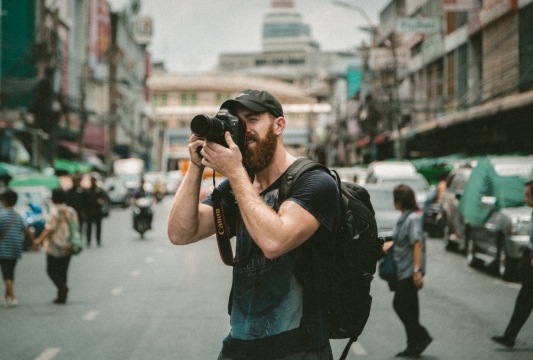Carving Out a Career in Photography: A Freelancer’s Guide

Photography is a rare field, where creativity and science meet with extremely high demand. It is easy to snap a picture, but there is something altogether more alchemical about taking a photograph. If you are an aspiring photographer, you’ll naturally be thinking about the best way to go about it. What follow are some simple tips to help guide your thinking.

Your Specialism
The very first decision you get to make relates to the specifics of your trade: what kind of photography will you specialise in? You might already have a clear idea of your ideal business model, but many creatives new to photography – and many recent graduates – find themselves struggling to pick between a number of favoured disciplines.
If you are particularly enthused by the UK’s vibrant live music scene, you might lean into gig photography. Despite the relative lack of funding in the live industry at the moment, photography can be an extremely lucrative path to take within it. This is particularly true if you can score press passes to big festivals and arena concerts, though a targeted approach within a local scene or venue can be more than enough for bread-and-butter income.
Alternatively, you might want something a little more stable, and even sedentary. Opening or joining a studio can help you slot into a number of niches, including family photography or fashion photography. If, conversely, you yearn for more travel, there are many contacts to be made within the travel industry.
Equipment
Whichever path you choose to set yourself on, you will need to invest in the right equipment. The specialism on which you land will somewhat inform the equipment you buy, but much of the influence will come from your personal preferences. For example, while many might need to stay abreast of developments in digital technology, you might like to work with film – in which case a dark room might make more sense to invest in than fancy DSLRs and peripherals.
A Note on Safety
Safety is an often less-considered aspect of building a photography career, but deserves mention here for a number of reasons. In the conventional sense, photography studios that invite clients and customers in come under both health and safety and public liability law.
As a worker in a pre-existing photography studio, their failure to properly maintain safe working conditions could lead to your injury, and eligibility to make a personal injury claim. On the other hand, a customer’s injury on-site due to poor safety processes could lead to significant costs for you or your business.

Launching
With the expertise, equipment and an understanding of your civil and legal obligations within operating your business, you can turn to the fun part: launching it. Here, you will need to know what the average industry rates are for photographers within your field, and price yourself accordingly. Market research can also help you identify regional or industry gaps, and target your launch properly. A good online marketing campaign and a solid portfolio will do all the heavy lifting for you; consider having a website to make things even easier.





